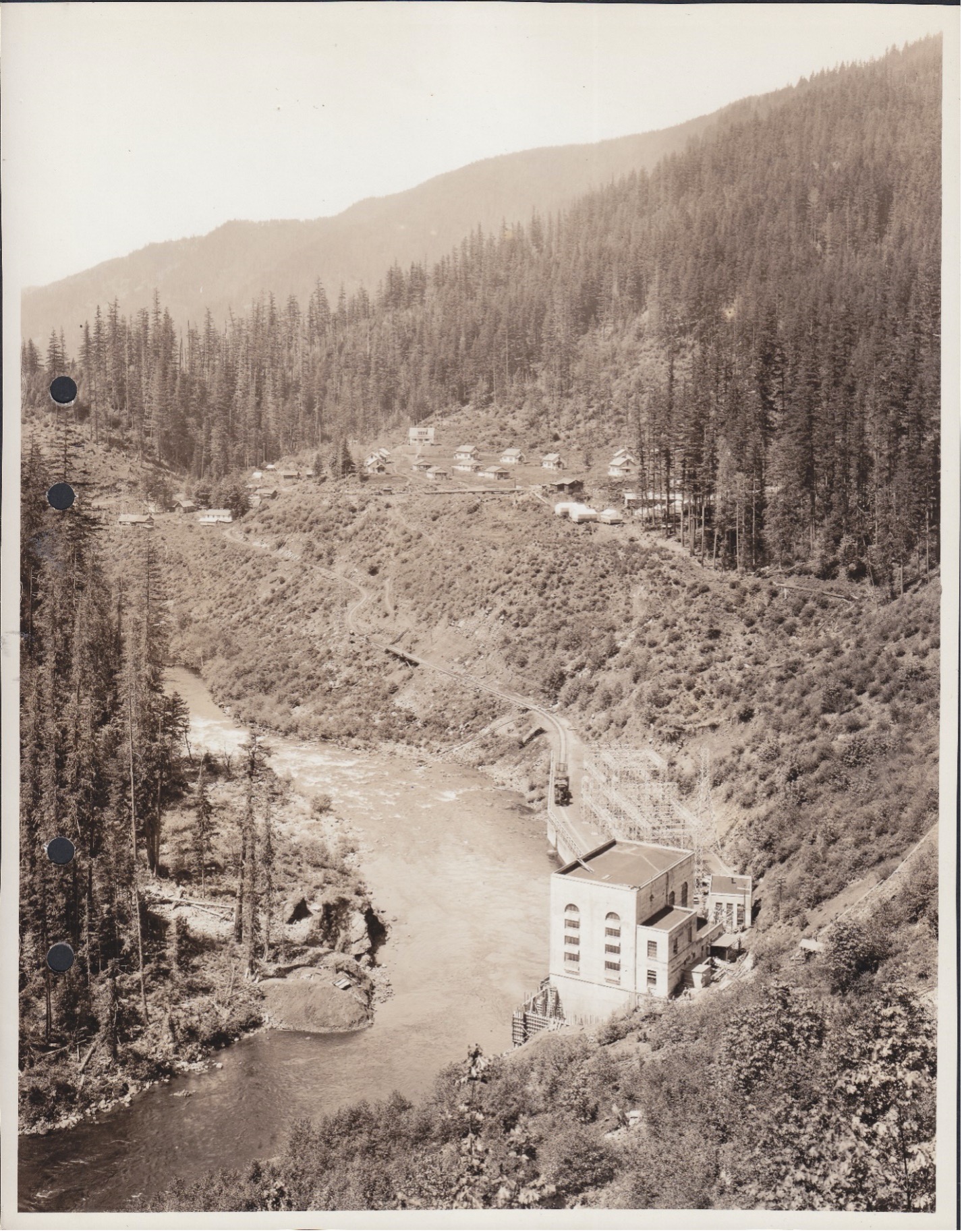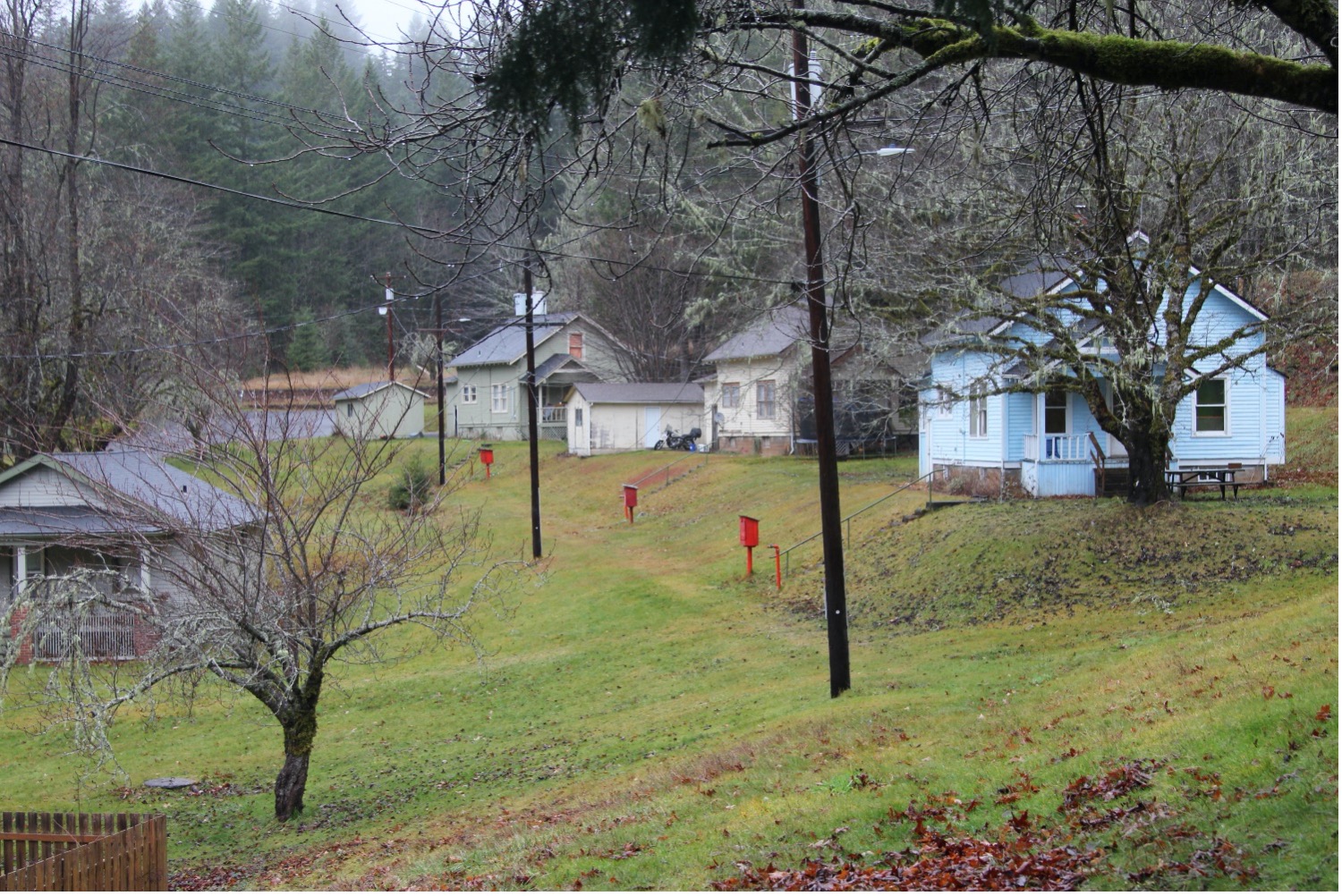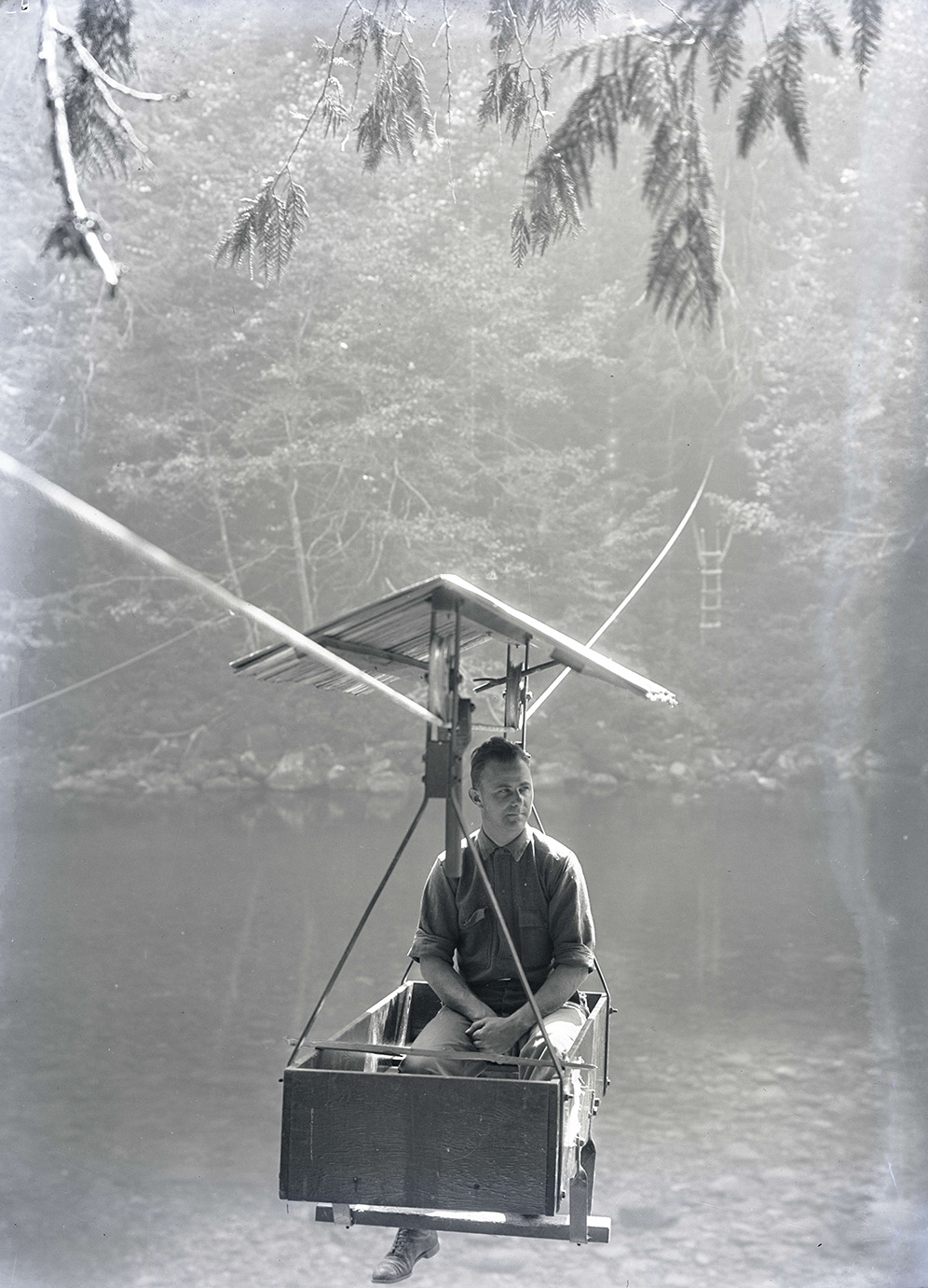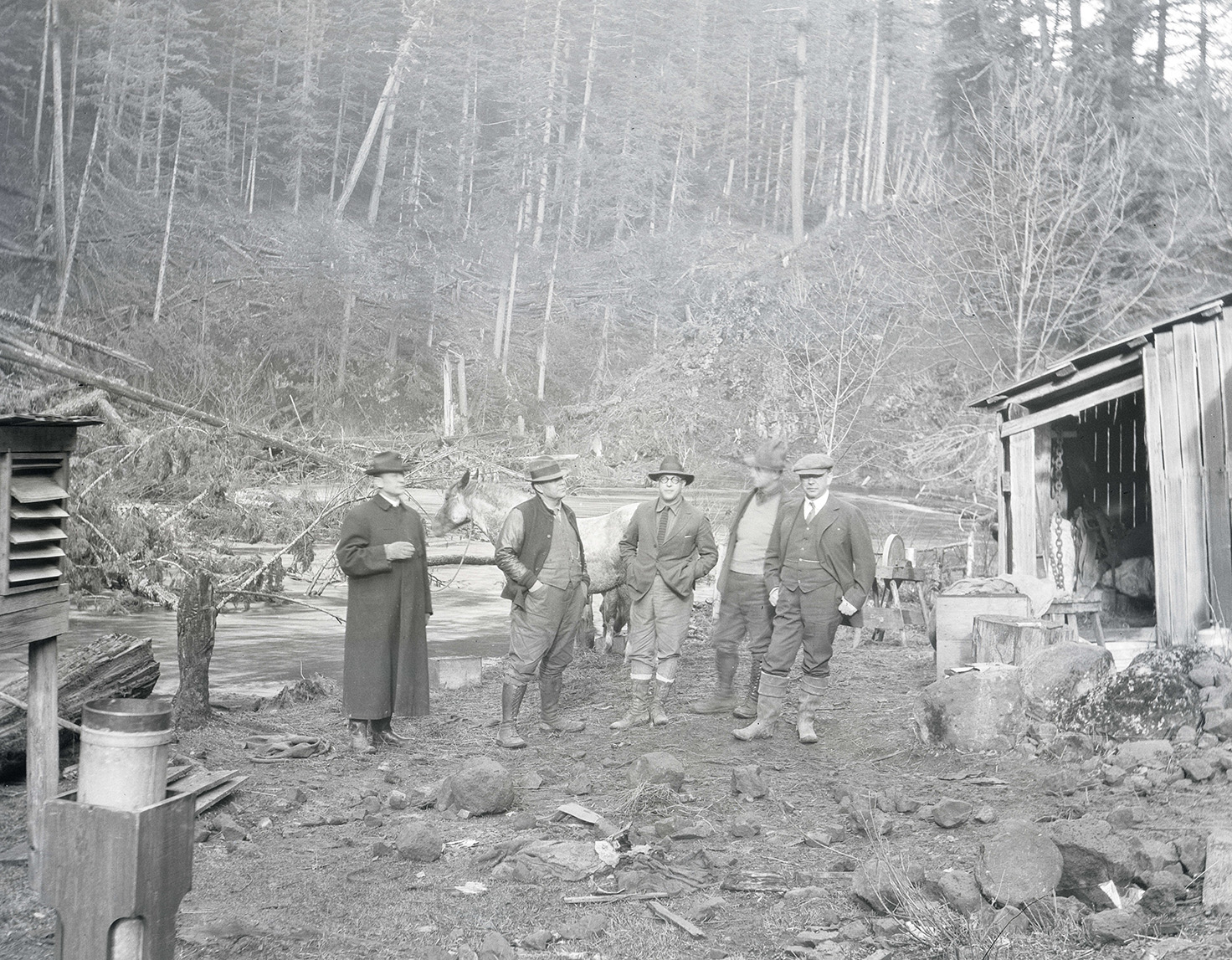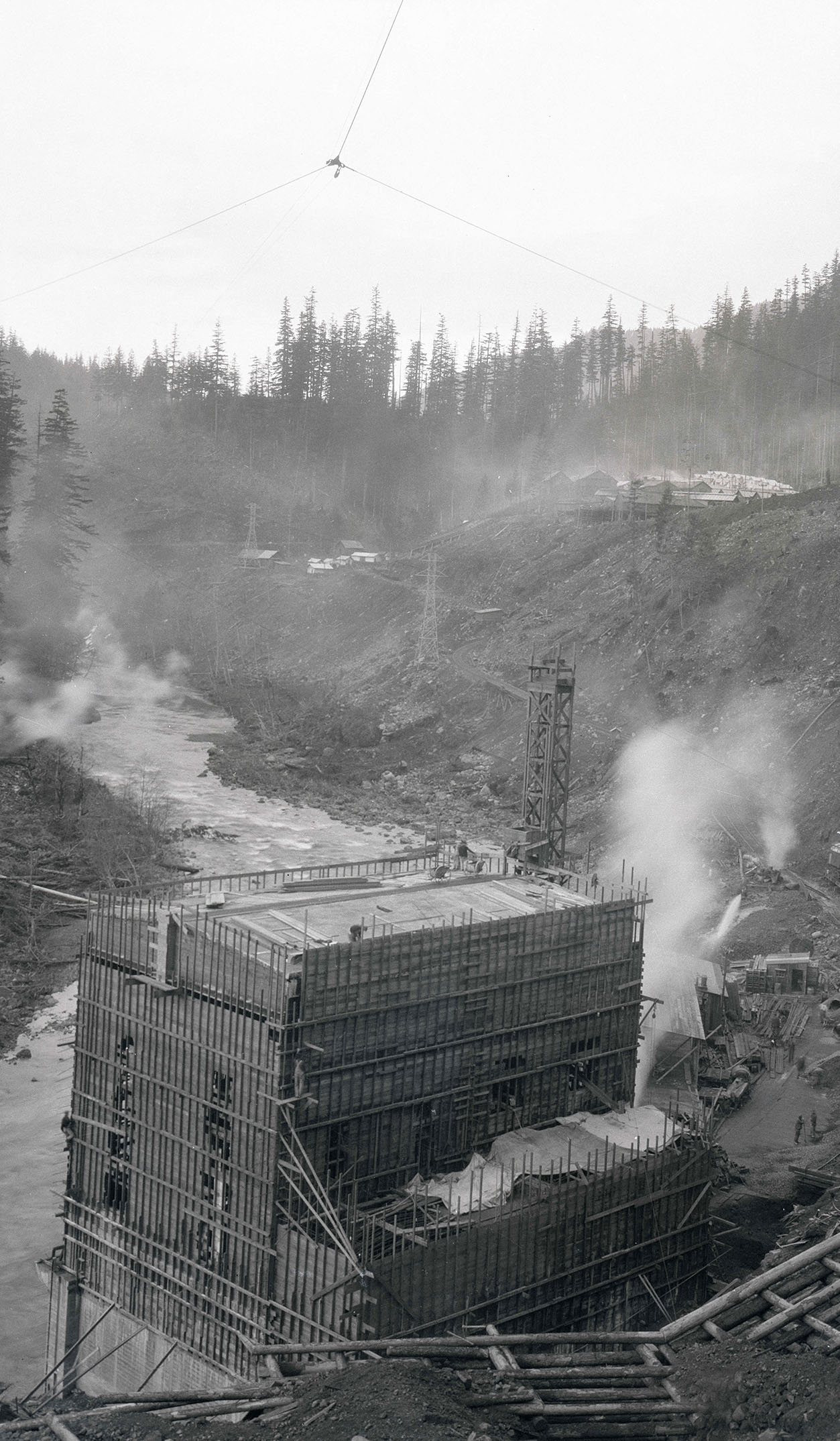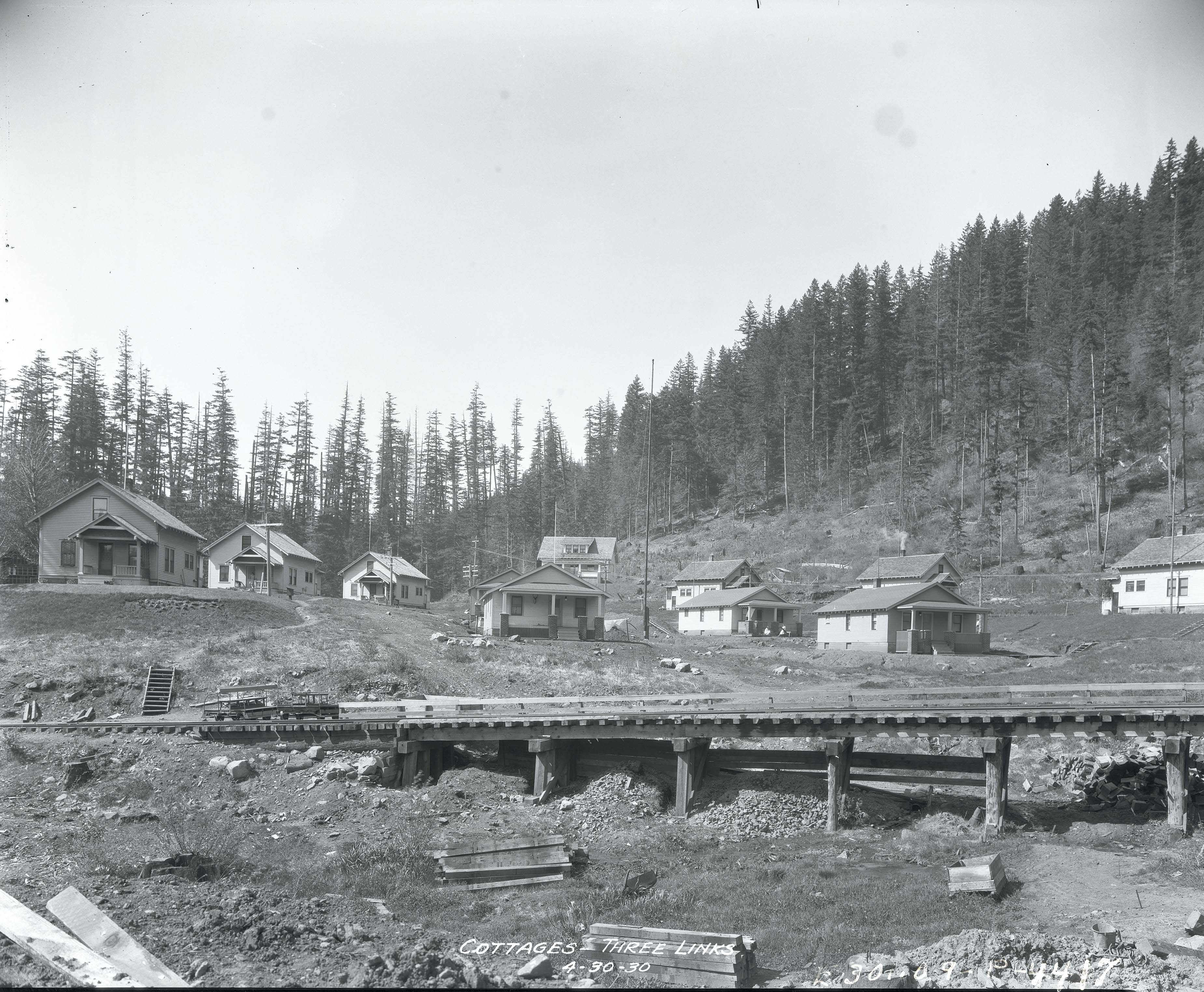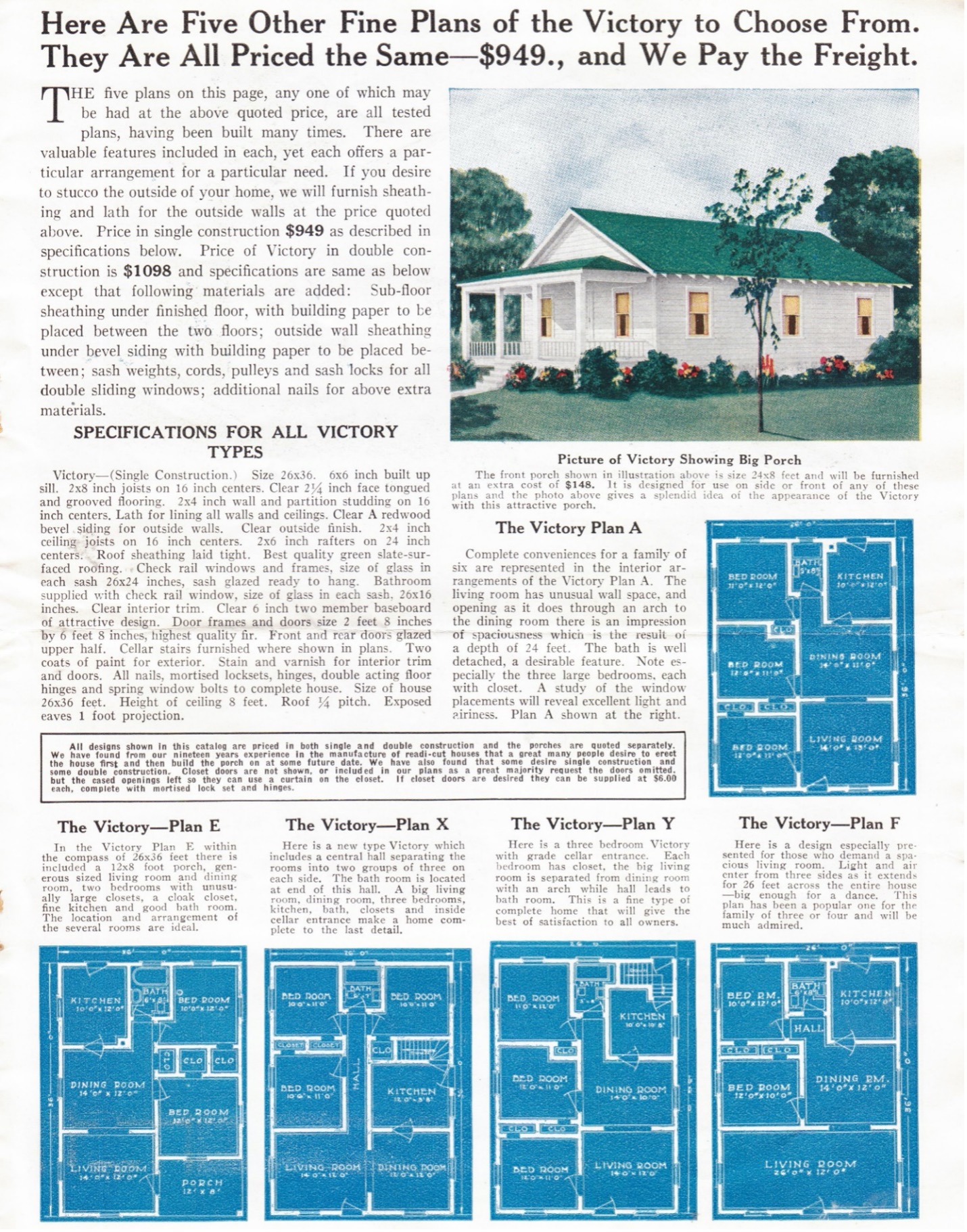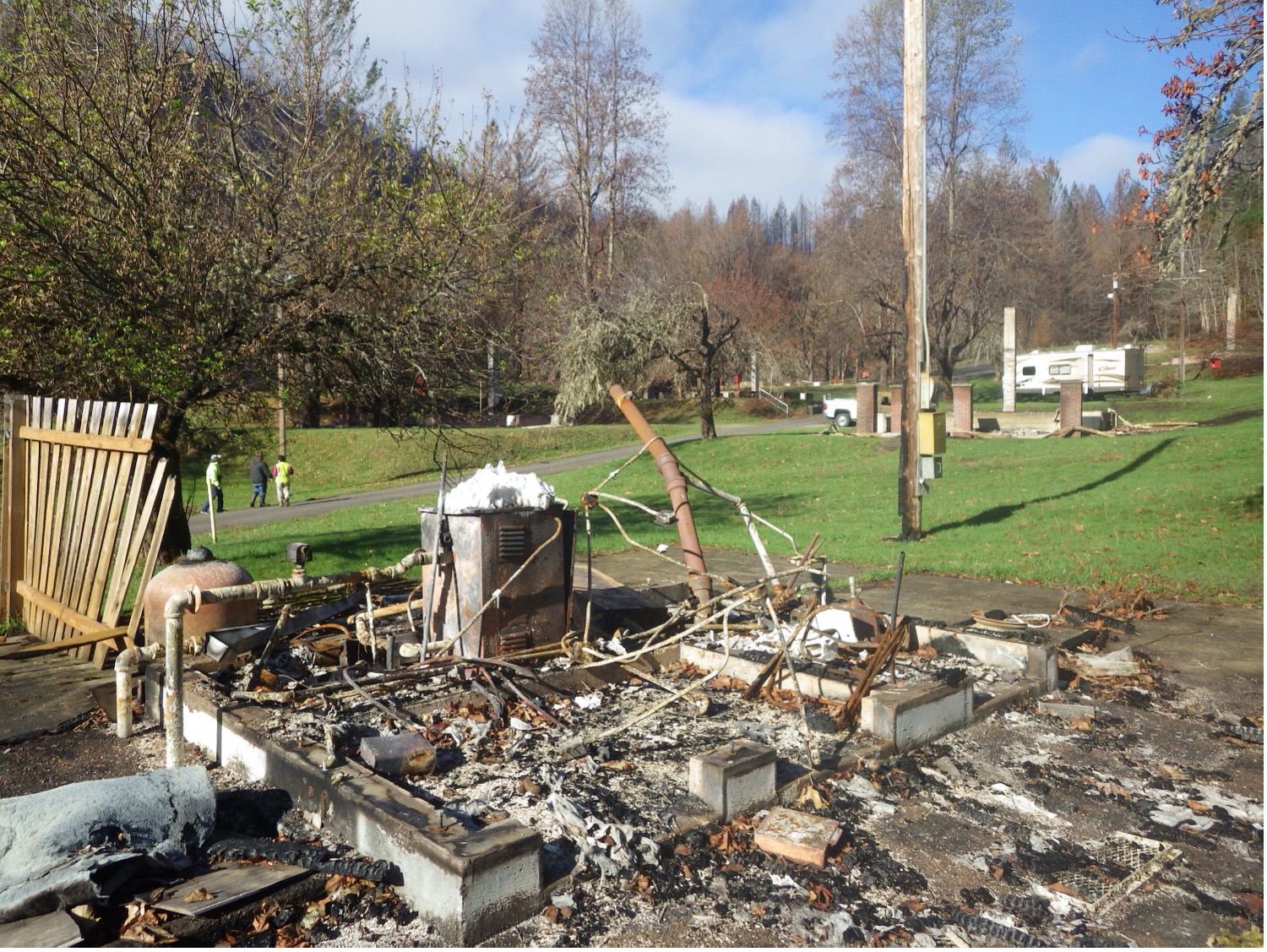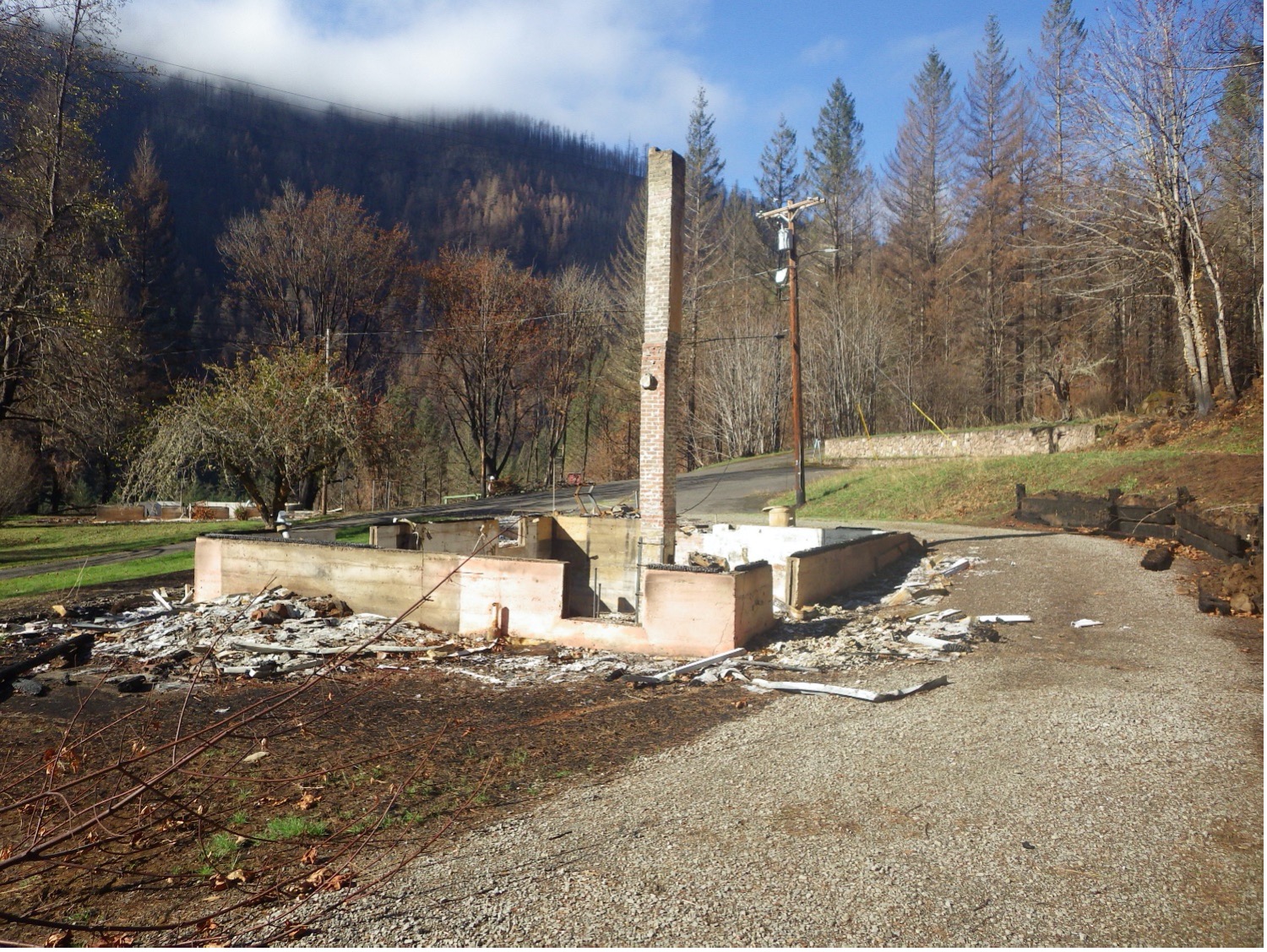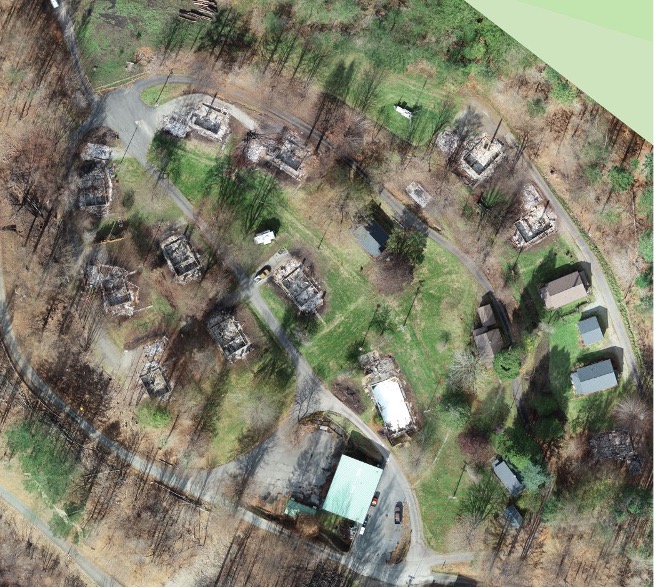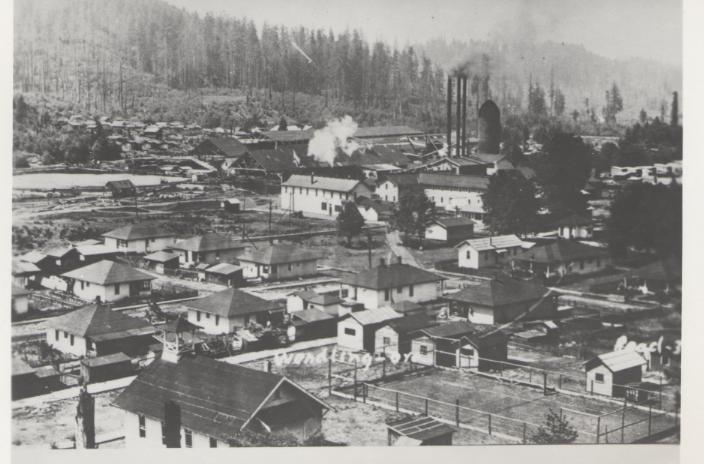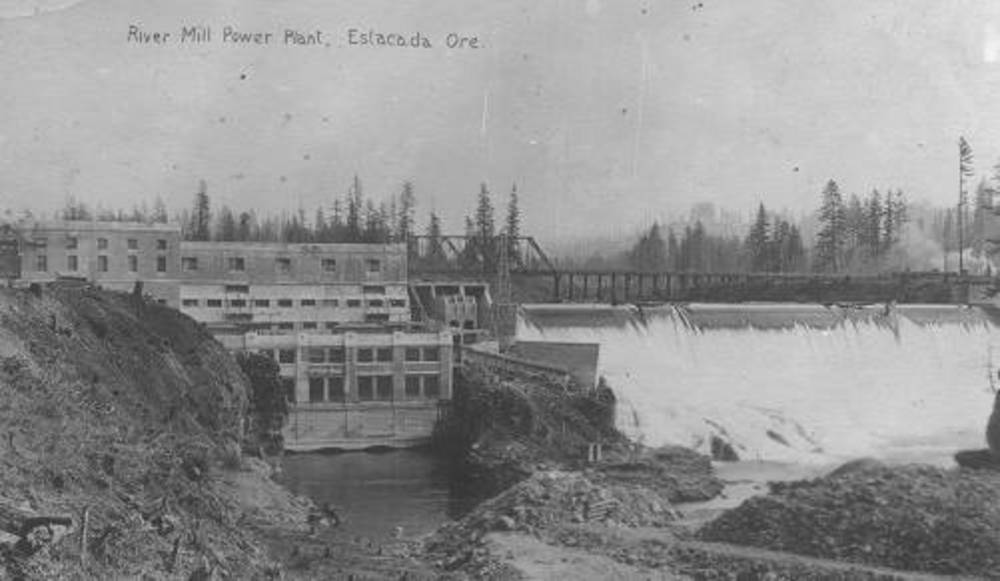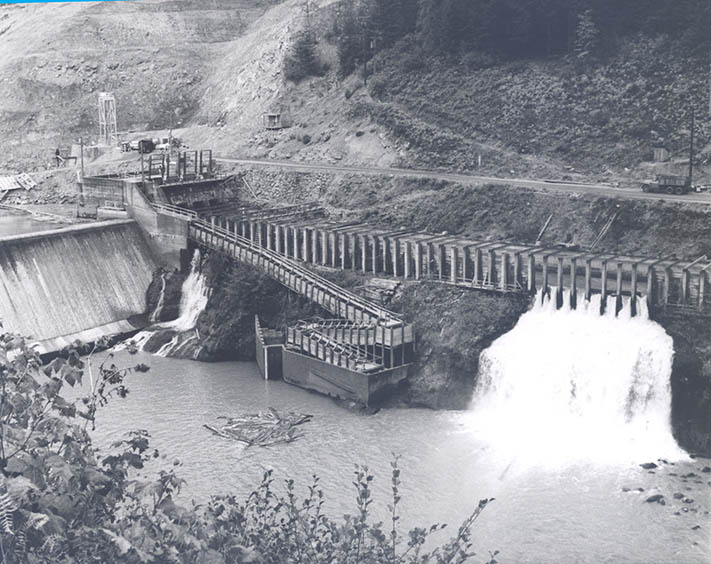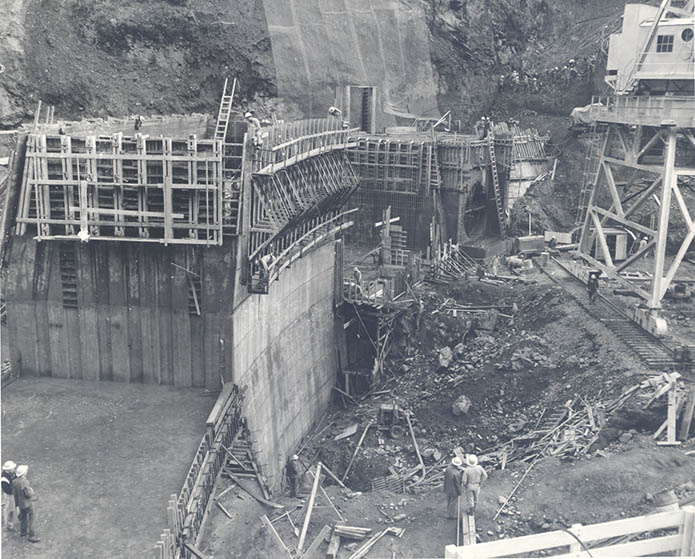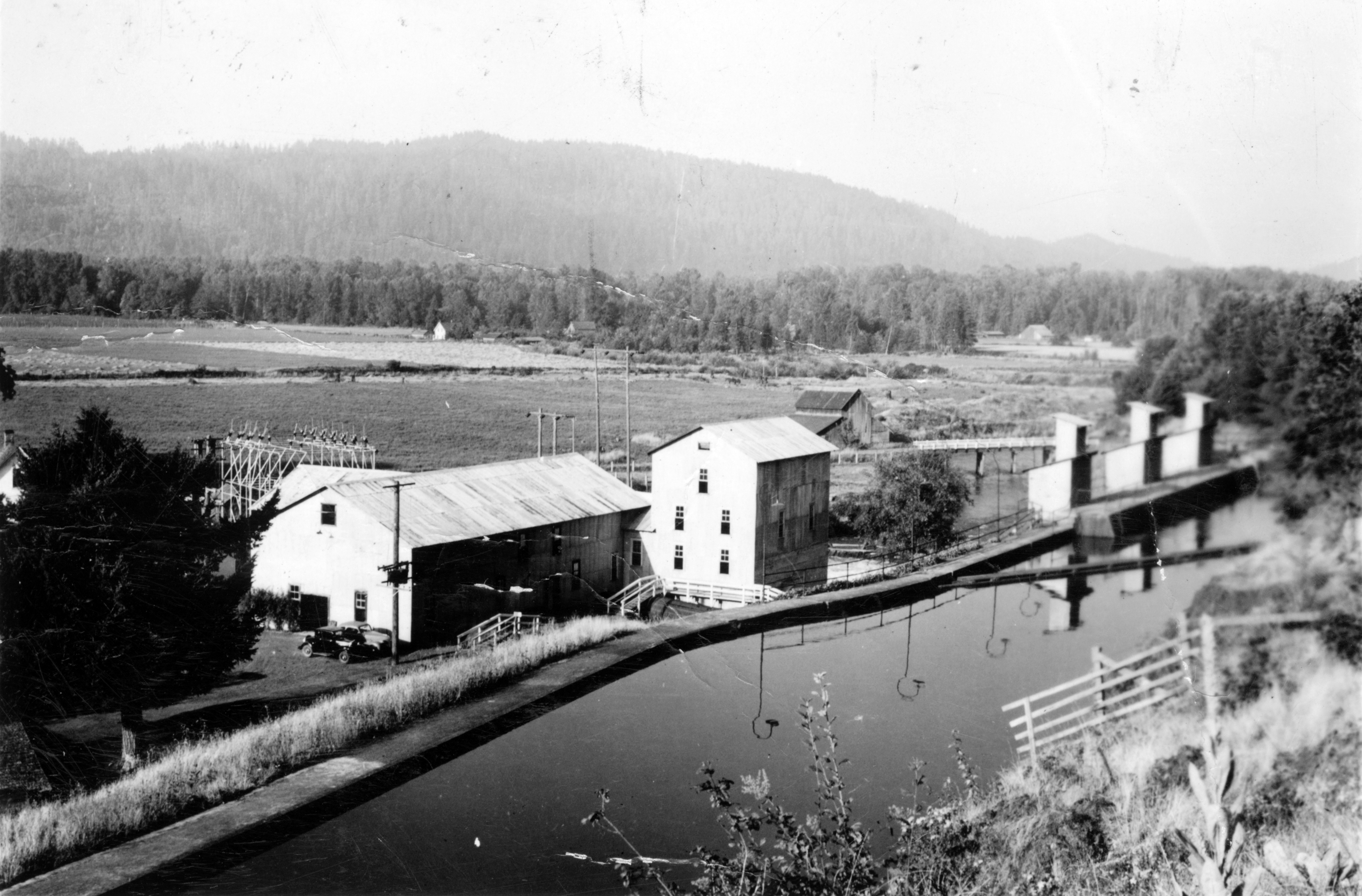Three Lynx Village, about twenty miles east of Estacada in the Mount Hood National Forest, is one of the longest lived company towns associated with the development of industrial uses in western Oregon. A company housing area located on permitted land—that is, land designated for other uses—the village was established during the 1920s and 1930s by the Portland Railway Light and Power Company (later named PEPCO and now Portland General Electric) to support the operation of the Oak Grove Powerhouse.
Three Lynx is situated on terrace deposits at about 1,200 feet in elevation along the Oak Fork of the Clackamas River. The area was first developed as Camp 8 and later, with the construction of permanent buildings, became known as Three Lynx after a nearby creek. Some early reports referred to the area as Three Links, reportedly based on a surveyor's incident that has been debunked in Oregon Geographic Names, but confusion over the area's name persisted for much of the twentieth century.
Company housing in Three Lynx was built in two phases. Seven one-and-one-half story houses were built on the site in 1924, followed by eight single-story Aladdin Reddi-Built houses assembled five years later when the powerhouse was expanded. Aladdin, a national kit builder, operated a factory in Portland, and the pre-cut materials were shipped by way of the Springwater Division Line to Estacada and then past the Faraday station, near Cazadero, on a company-built freight-only line to Three Lynx. The construction crew for Portland Railway Light and Power, disappointed that their construction work had been replaced by the Aladdin kits, built a duplicate of the Aladdin Victory model at Three Lynx, just to show that they could.
Throughout the 1930s, Three Lynx served as a focal point for the isolated utility and U.S. Forest Service workers and their families who lived in the Upper Clackamas River area. A school overlooked Three Lynx, operated by Three Lynx School District #123 to serve students through eighth grade. Residents hosted dances and community dinners and took pride in the school’s championship basketball teams. In the 1950s, village residents gained permission to use company equipment to build a swimming pool.
During the winter, the rail line and dirt road that connected the village to Estacada were virtually impassable, and residents used a company speeder—a small self-propelled rail car—to get to Estacada. Completion of Oregon Highway 224, also called the Clackamas River highway, largely followed the route of the rail line, making travel to Three Lynx easier. When the powerhouse was modernized, the company no longer needed as many workers to live near the plant, and some families chose to relocate. The population of Three Lynx Village, never more than fifty people, began to decline. The school closed in 1988 and was demolished in 2014.
In 2018, when only a handful of houses were occupied, PGE decided to end its use of Three Lynx. The company conducted a national search to find a successor entity that could take over the buildings, subject to the approval of the Mount Hood National Forest, but without success. Then, on September 8, 2020, the Riverside Fire tore through the area, destroying all but five of the Three Lynx houses. The remaining buildings were removed in 2022, and the land—returned to a more natural state as required by PGE’s permit—reverted to the U.S. Forest Service.
-
![]()
Three Lynx Village & Oak Grove Powerhouse, c.1930.
Courtesy Portland General Electric -
![]()
Three Lynx Village, general view, 2018.
Courtesy George Kramer
-
![]()
A man rides a "baby buggy" across the Clackamas River at Three Lynx, 1922.
Oregon Historical Society Research Library, OrgLot151_PGE16-132 -
![From left: Franklin T. Griffith (President), O.B. Caldwell (Vice President), G.L Estabrook at far right (Secretary and Assistant Treasurer).]()
Oak Grove project, group at the intake area, above Three Lynx, 1923.
From left: Franklin T. Griffith (President), O.B. Caldwell (Vice President), G.L Estabrook at far right (Secretary and Assistant Treasurer). Oregon Historical Society Research Library, OrgLot151_PGE16-342 -
![]()
Oak Grove powerhouse and the Three Lynx camp, 1924.
Oregon Historical Society Research Library, Org. lot 151, PGE16-781 -
![]()
Cottages at Three Lynx, 1930.
Oregon Historical Society Research Library, Org. lot 151, PGE16-1046 -
![]()
Aladdin Company "Victory" Housing plans, 1923.
Courtesy Aladdin Corporation
-
![]()
Three Lynx Village, view with pool and school, 2020.
Courtesy George Kramer
-
![]()
Three Lynx Cabin Damage, October 2020.
Courtesy George Kramer
-
![]()
Three Lynx Cabin Damage, October 2020.
Courtesy George Kramer
-
![]()
Portland General Electric Drone Image of Three Lynx Village, September 2020.
Courtesy Portland General Electric
Related Entries
-
![Company Towns]()
Company Towns
While there have been scores of industrial settlements and communities …
-
![Estacada]()
Estacada
Estacada (pop. 3,400 in 2018) sits on the right bank of the Clackamas R…
-
![Faraday Dam and Powerhouse]()
Faraday Dam and Powerhouse
The Faraday Powerhouse, located in Estacada on the Clackamas River, pro…
-
![North Fork Dam and Powerhouse]()
North Fork Dam and Powerhouse
The North Fork Dam and Powerhouse, owned and operated by Portland Gener…
-
![Portland Railway Light and Power]()
Portland Railway Light and Power
Portland Railway Light & Power (PRLP) was created in 1906 through the c…
-
![Walterville Canal & Powerhouse]()
Walterville Canal & Powerhouse
The Walterville Canal and Powerhouse is owned and operated by the Eugen…
Related Historical Records
Map This on the Oregon History WayFinder
The Oregon History Wayfinder is an interactive map that identifies significant places, people, and events in Oregon history.
Further Reading
Kramer, George. PGE Three Lynx Village - State Level Historic Documentation. Portland, Ore. Portland General Electric, 2021. (Prepared as partial mitigation, Mt. Hood National Forest/FERC License No. 2195.)
Robley, R. R. Portland Electric Power Company with its Predecessor and Subsidiary Companies. Portland, Ore.: Portland General Electric Company, 1935.
Kramer, George. PGE Three Lynx Village - State Level Historic Documentation. Portland, Ore.: Portland General Electric, 2021. (Prepared as partial mitigation, Mt Hood National Forest/FERC License No. 2195.)
Wollner, Craig. Electrifying Eden: Portland General Electric, 1889-1965. Portland: Oregon Historical Society Press, 1990.



